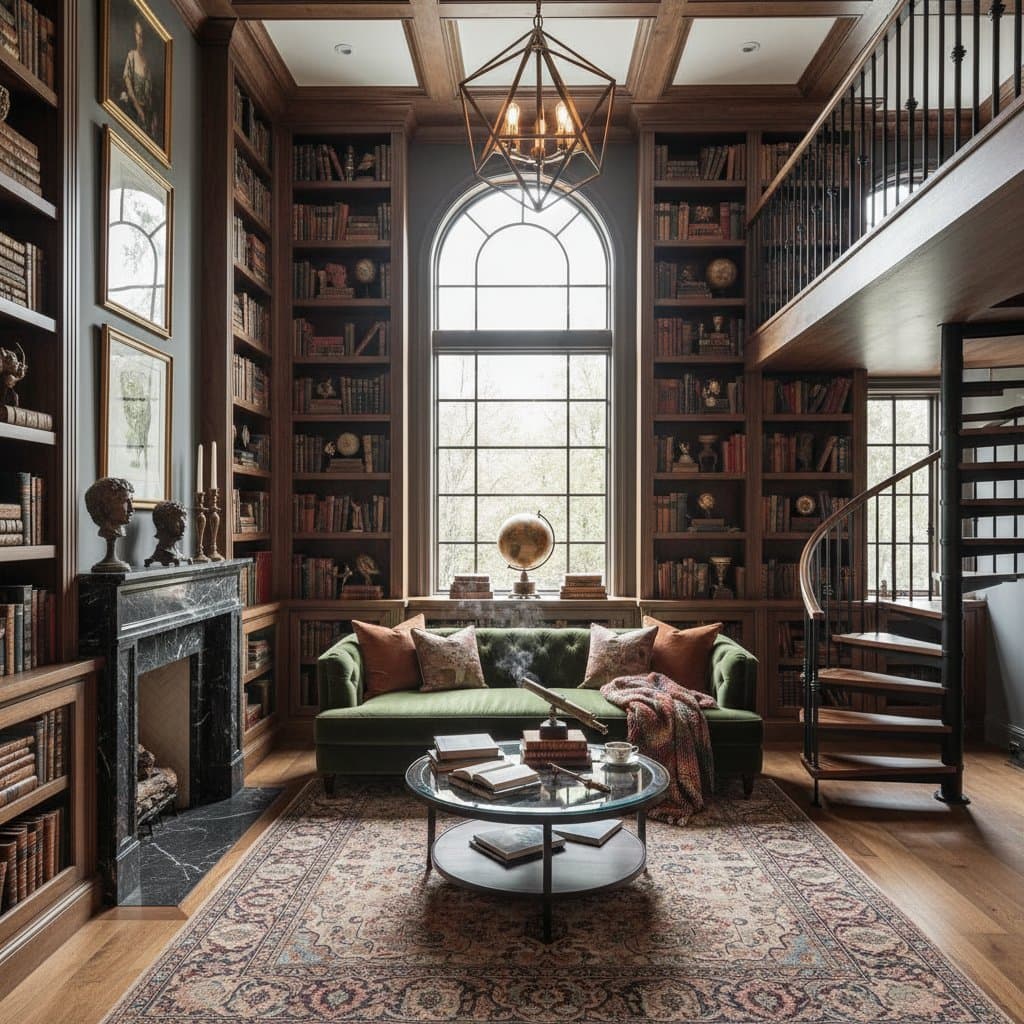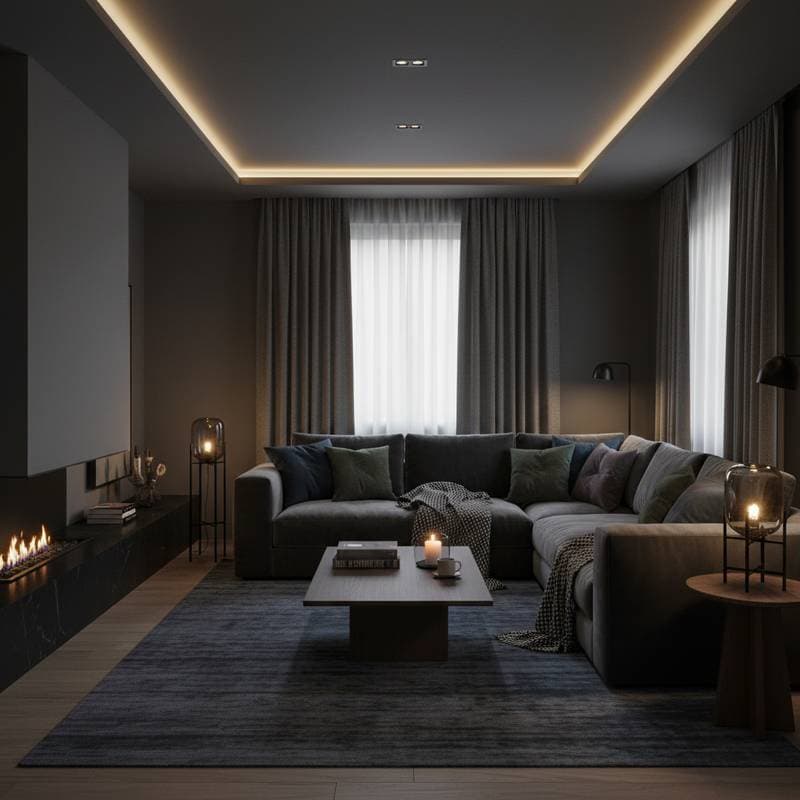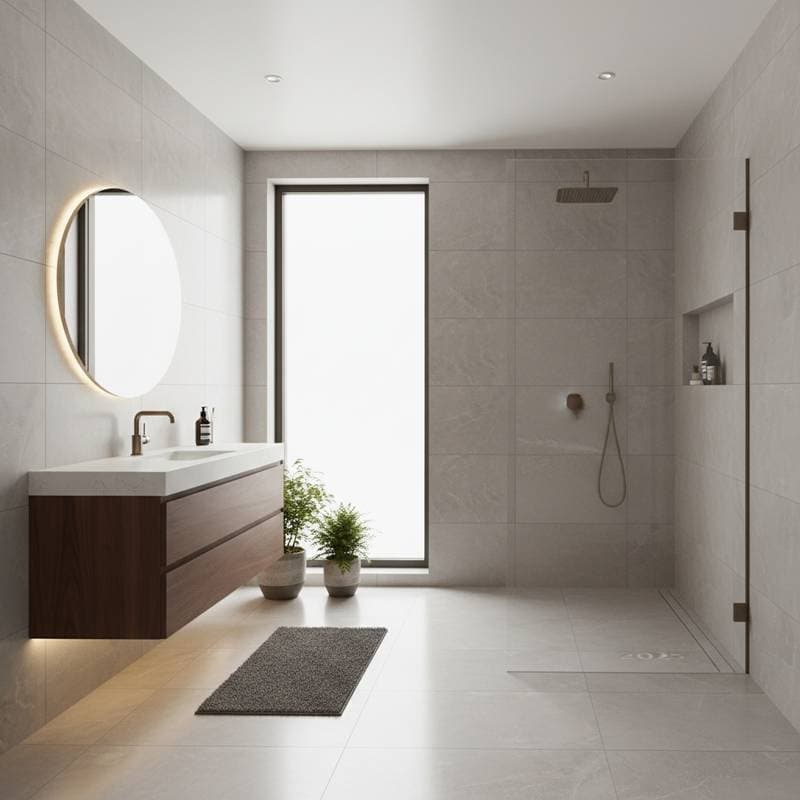Dark Academia: The 2025 Trend Elevating Home Value
Dark Academia design captures the essence of intellectual elegance through moody, layered interiors. This style draws from historic libraries and scholarly retreats, incorporating deep colors, rich woods, and vintage accents. Homeowners who adopt this approach create spaces that exude warmth and permanence, appealing to buyers who seek distinctive character over fleeting trends.
Buyers increasingly value homes that evoke emotion and sophistication. Dark Academia interiors stand out in competitive markets, often leading to higher offers. Real estate professionals note that such designs photograph exceptionally well, generating more interest and potentially increasing perceived property value by 5 to 10 percent.
Defining Dark Academia Design
Dark Academia avoids stark minimalism in favor of narrative depth. Walls feature deep greens, navies, chocolates, or charcoals in matte finishes that absorb light softly. Textures dominate with velvet upholstery, leather bindings, linen drapes, and woods like walnut or oak showing natural grain.
Furniture appears heirloom-quality, with brass lamps casting golden hues and shelves lined with leather-bound books. Lighting layers include sconces, table lamps, and candles to foster intimacy. Greenery such as ferns or ivy introduces subtle vitality without overwhelming the palette.
This aesthetic differs from gothic styles by emphasizing warmth and intellect over drama. It invites reflection through curated art—portraits, landscapes, or botanical prints—and personal artifacts that tell stories.
The Value Proposition for Homeowners
Character-driven homes command premiums in real estate. Dark Academia signals thoughtful investment, transforming a property into a lifestyle destination. Emotional resonance draws buyers, while the style's timeless quality ensures broad appeal.
Photogenic qualities amplify online visibility. Listings with moody, textured rooms receive higher engagement, translating to quicker sales and elevated prices. Sustainable elements, like restored vintage pieces, further enhance appeal in eco-conscious markets.
Implementing Dark Academia: Step-by-Step Guide
Achieve this look methodically to maintain balance and function.
- Select a foundational palette. Opt for deep, grounding colors on walls or cabinetry. Test samples in natural light to ensure harmony.
- Incorporate layered lighting. Install warm-bulb fixtures such as brass pendants or floor lamps. Add dimmers for adjustable ambiance.
- Introduce wood elements. Choose solid pieces like oak bookshelves or mahogany tables. Refinish existing items for authenticity.
- Curate decorative accents. Display stacked books, framed maps, or antique globes. Select art that evokes scholarly themes.
- Layer textiles for comfort. Use wool rugs, velvet cushions, and linen curtains to add tactile depth and sound absorption.
- Integrate natural elements. Position low-light plants like ivy near windows to soften edges and purify air.
- Enhance with sensory details. Incorporate candles scented with leather or spice to complete the immersive atmosphere.
Cost and Time Considerations
Budget varies by scope and sourcing. Entry-level transformations reuse existing items, while premium setups involve custom work.
| Element | Estimated Cost | Influencing Factors |
|---|---|---|
| Wall painting | $2–$4 per square foot | Paint quality, surface preparation |
| Lighting fixtures | $150–$600 per room | Installation complexity, material |
| Wood furniture | $500–$5,000 | Solid vs. composite, antiquity |
| Textiles and decor | $300–$2,000 | Custom weaving, quantity |
| Art and accessories | $200–$1,500 | Original works, framing |
A single room requires a weekend for painting and styling, extending to a month for full-home overhauls. Sourcing antiques may add weeks, but local thrift visits accelerate progress.
Essential Tools and Safety Practices
Gather basics for efficient execution:
- Paint rollers, brushes, trays, tape, and drop cloths.
- Screwdrivers, wire cutters, levels, and anchors for installations.
- Extension cords, dimmers, ladders, gloves, and masks.
Prioritize safety: Disconnect power for electrical tasks, ventilate during painting, and use stable surfaces for elevated work. Inspect vintage items for hazards like lead paint, sanding with protection. Comply with local codes for modifications.
DIY Approaches Versus Professional Assistance
Tackle DIY for painting, lighting swaps, and decor arrangement if skilled in basic tools. This suits reversible changes like textiles or plug-in lamps.
Engage professionals for structural elements such as built-in shelving, rewiring, or custom millwork. Interior designers ensure tonal balance, preventing overly dim results. Stagers optimize for sales photography, maximizing value impact.
Adapting to Regional and Spatial Contexts
In cooler climates, amplify warmth with metallics and multiple light sources. Sunny areas benefit from accent walls to control heat absorption. Protect wood in humid zones with sealants; secure furnishings in high-risk areas with retardant fabrics and anchors.
Apply selectively: Studies and dining rooms embrace full immersion, while kitchens use dark cabinets with light counters. Bedrooms gain serenity from the palette, and open plans require defined zones to avoid overwhelming scale.
Achieving Balance and Sustainability
Prevent constriction by incorporating mirrors, light rugs, or metallic highlights. Lighter ceilings and varied art maintain visual flow. Dimmers allow daytime brightness and evening mood shifts.
Sustainability aligns naturally: Source vintage via estate sales or online markets for reduced waste. Natural fibers endure, and refinishing preserves resources. This approach lowers environmental footprint while building enduring value.
Avoiding Pitfalls and Sourcing Wisely
Steer clear of uniform black, which lacks warmth—blend with earth tones instead. Multiple lighting prevents flatness, and authentic materials ensure depth. Personalize with books or heirlooms to avoid sterility.
Hunt locally for patina-rich finds; mix eras for authenticity. Frame classical prints in complementary woods. For larger projects, consult experts to integrate modern utilities seamlessly.
Room-Specific Strategies
| Room Type | Key Adjustments | Benefits |
|---|---|---|
| Small spaces | Accent wall only | Preserves openness |
| Expansive areas | Full dark coverage | Fosters intimacy |
| Low-light rooms | Extra lamps, mirrors | Enhances perceived size |
| High-ceilinged | Drapes, molding | Anchors proportions |
Integrating with Contemporary Lifestyles
Dark Academia complements hybrid living: A styled nook serves as a productive office, while bedrooms promote relaxation. Dark backdrops camouflage tech, blending seamlessly. Renters achieve impact through peel-and-stick options and portable decor.
Buyer Appeal and Long-Term Care
Prospective owners appreciate the refined retreat from minimalism. Agents observe expedited sales for character-filled listings. To preserve, oil woods regularly, dust meticulously, and refresh textiles seasonally.
Adaptability ensures longevity: Introduce neutrals or brighter accents for evolving preferences without major overhauls. This investment yields ongoing returns through enhanced livability and market positioning.










